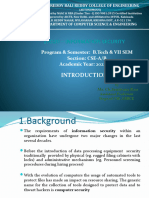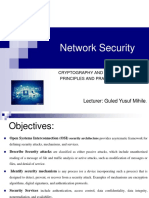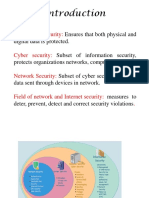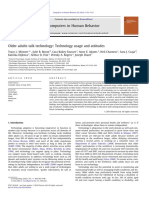0% found this document useful (0 votes)
43 views10 pagesComputer Security Concepts
Computer security focuses on protecting assets within computer systems, emphasizing the C-I-A triad: confidentiality, integrity, and availability. It encompasses various concepts including vulnerabilities, threats, attacks, and security mechanisms, while also addressing the importance of operating systems in enforcing security. Additionally, it discusses network security attacks, wireless network vulnerabilities, and denial of service attacks, highlighting the need for robust security measures in both software and hardware.
Uploaded by
seethas653Copyright
© © All Rights Reserved
We take content rights seriously. If you suspect this is your content, claim it here.
Available Formats
Download as PDF, TXT or read online on Scribd
0% found this document useful (0 votes)
43 views10 pagesComputer Security Concepts
Computer security focuses on protecting assets within computer systems, emphasizing the C-I-A triad: confidentiality, integrity, and availability. It encompasses various concepts including vulnerabilities, threats, attacks, and security mechanisms, while also addressing the importance of operating systems in enforcing security. Additionally, it discusses network security attacks, wireless network vulnerabilities, and denial of service attacks, highlighting the need for robust security measures in both software and hardware.
Uploaded by
seethas653Copyright
© © All Rights Reserved
We take content rights seriously. If you suspect this is your content, claim it here.
Available Formats
Download as PDF, TXT or read online on Scribd
/ 10






















































































